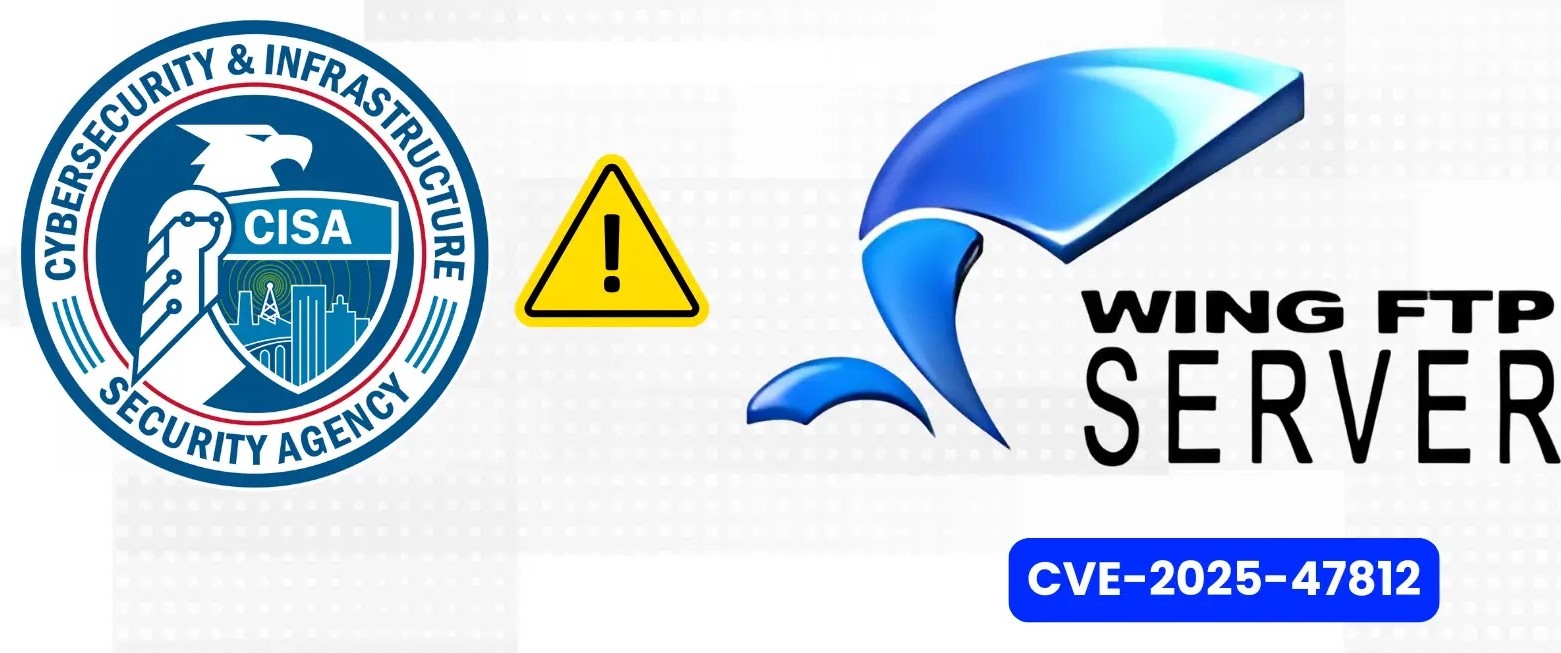
CISA Warns of Wing FTP Server Vulnerability Actively Exploited in Attacks
CISA Sounds the Alarm: Wing FTP Server Under Active Exploitation
A critical cybersecurity alert has been issued by the Cybersecurity and Infrastructure Security Agency (CISA), shaking the foundations for organizations relying on Wing FTP Server. This widely used file transfer solution is now at the epicenter of active exploitation by cybercriminals, underscoring the urgent need for immediate action. The vulnerability, identified as CVE-2025-47812, has been added to CISA’s Known Exploited Vulnerabilities (KEV) catalog, serving as a grave reminder of its immediate and significant threat posture.
Understanding CVE-2025-47812: The Critical Threat
The core of this heightened alert lies with CVE-2025-47812, a vulnerability within Wing FTP Server that is currently being weaponized in real-world attacks. While specific technical details released by CISA remain concise due to the active nature of the exploitations, its inclusion in the KEV catalog signifies a critical flaw that grants attackers unauthorized access or control over affected systems. Potential impacts range from data exfiltration and unauthorized file manipulation to full system compromise, presenting severe operational and reputational risks to any organization utilizing vulnerable versions of Wing FTP Server.
CISA’s KEV Catalog and Immediate Action
CISA’s Known Exploited Vulnerabilities (KEV) catalog is a definitive list of security flaws proven to be actively exploited in the wild. Its purpose is to drive urgent remediation by federal agencies, and by extension, all organizations. The inclusion of CVE-2025-47812 in this catalog means that the vulnerability is not merely theoretical; it’s a demonstrated pathway for adversaries. The clear implication is an immediate remediation deadline, leaving no room for delayed responses.
Remediation Actions: Securing Your Wing FTP Server
Given the active exploitation of CVE-2025-47812, prompt and decisive action is paramount for all organizations utilizing Wing FTP Server. Failure to address this vulnerability immediately could lead to significant security breaches.
- Apply Vendor Patches Immediately: Monitor the official Wing FTP Server website and vendor communications for security patches related to CVE-2025-47812. Apply all available updates as soon as they are released. This is the single most effective mitigation.
- Isolate and Segment: If immediate patching is not possible, consider isolating your Wing FTP Server instances from critical internal networks. Implement network segmentation to limit the potential lateral movement of attackers if a compromise occurs.
- Review Network Access Controls: Scrutinize all inbound and outbound firewall rules for the server. Restrict access to Wing FTP Server to only necessary IP addresses and ports, adhering strictly to the principle of least privilege.
- Monitor for Suspicious Activity: Enhance logging and monitoring for your Wing FTP Server. Look for unusual file transfers, unauthorized login attempts, unexplained process executions, or any deviation from baseline behavior. Integrate server logs with your Security Information and Event Management (SIEM) system.
- Implement Multi-Factor Authentication (MFA): Ensure MFA is enforced for all administrative and user accounts on the Wing FTP server to add an additional layer of security against compromised credentials.
- Conduct Immediate Vulnerability Scans: Utilize vulnerability scanning tools to confirm the presence of CVE-2025-47812 and any other potential weaknesses on your systems.
- Backup Critical Data: Ensure that regular, secure backups of data stored on or accessed by the Wing FTP Server are in place and tested. This facilitates recovery in the event of a successful attack.
Recommended Security Tools and Resources
Effective defense against vulnerabilities like CVE-2025-47812 often involves a combination of proactive measures and capable tools. Here are some relevant categories and examples:
| Tool Category / Name | Purpose | Link (Example) |
|---|---|---|
| Vulnerability Scanners (e.g., Nessus, OpenVAS) | Detect known vulnerabilities, including active CVEs, in your network and applications. | Nessus |
| Intrusion Detection/Prevention Systems (IDS/IPS) | Monitor network traffic for suspicious activity and block malicious attacks. | Snort |
| Security Information and Event Management (SIEM) | Aggregate and analyze security logs from various sources to provide centralized visibility and threat detection. | Splunk |
| Network Segmentation Solutions | Create logical divisions within your network to limit the blast radius of a breach. | (Vendor-specific solutions vary) |
| Multi-Factor Authentication (MFA) Solutions | Add an extra layer of security beyond passwords for user authentication. | Duo Security |
Staying Vigilant: A Continuous Security Posture
The active exploitation of CVE-2025-47812 in Wing FTP Server serves as a stark reminder that cybersecurity is not a static state but a continuous process. Organizations must maintain a proactive and adaptive security posture, prioritize timely patching, implement robust monitoring, and adhere to CISA’s directives. Vigilance and rapid response are critical in protecting digital assets against evolving threats.





